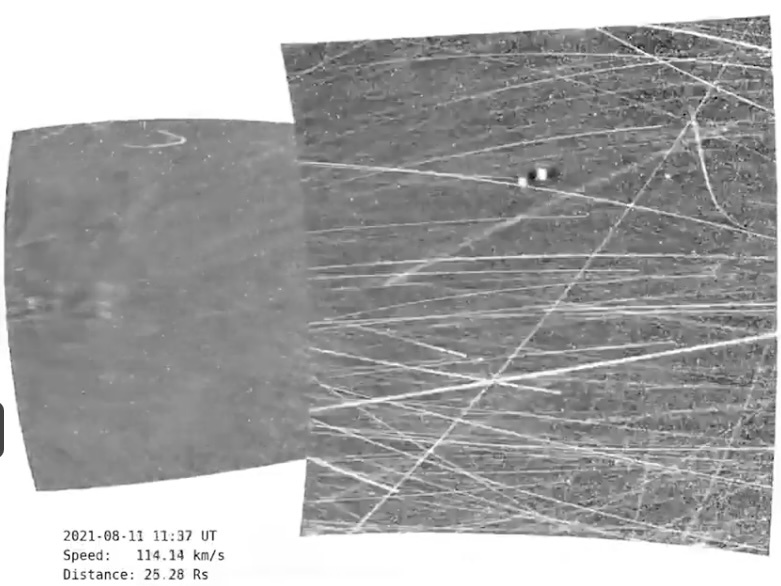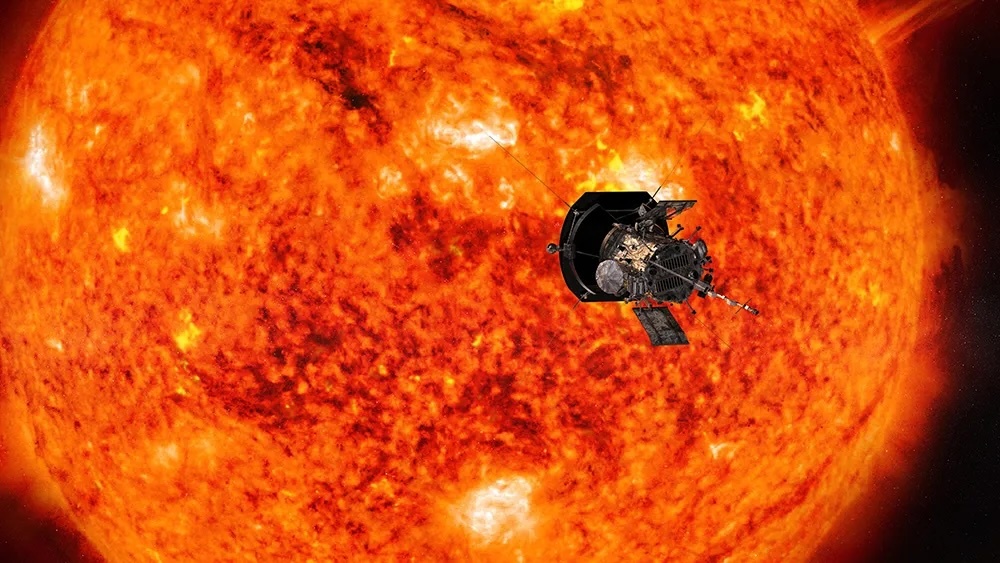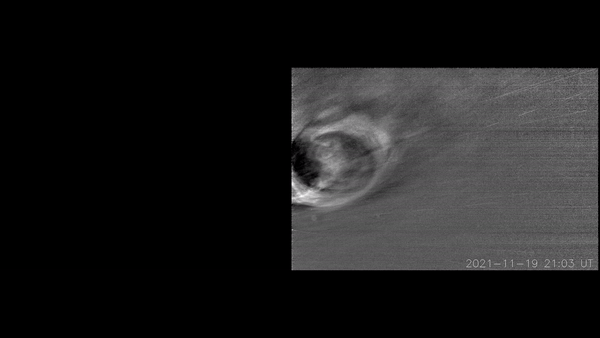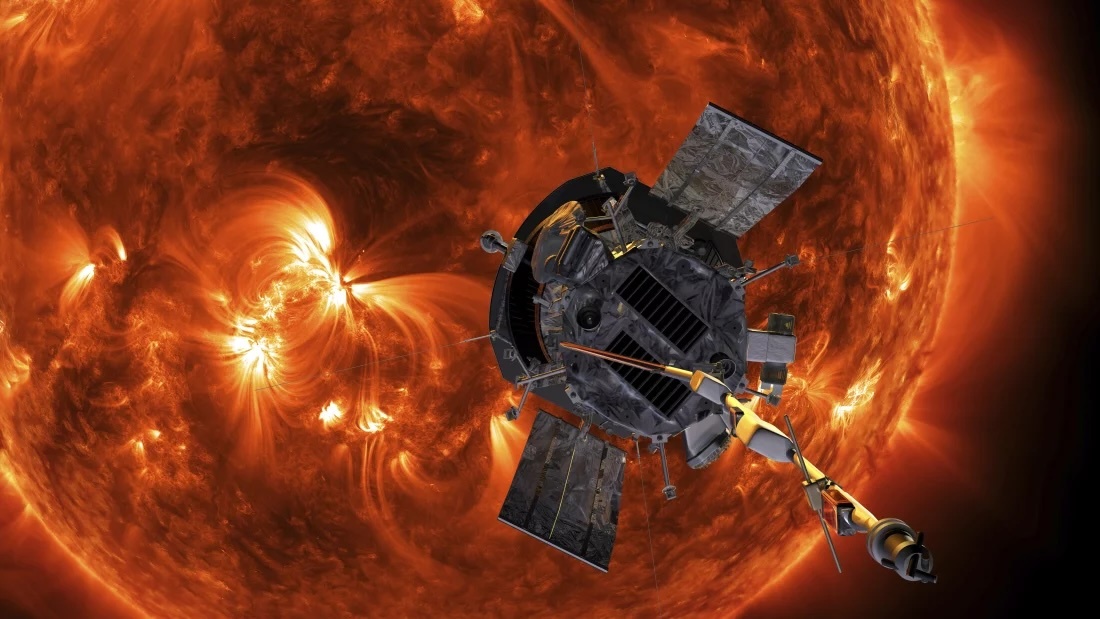13.12.2024
'We are preparing to make history': NASA's Parker Solar Probe gears up for epic sun flyby on Christmas Eve
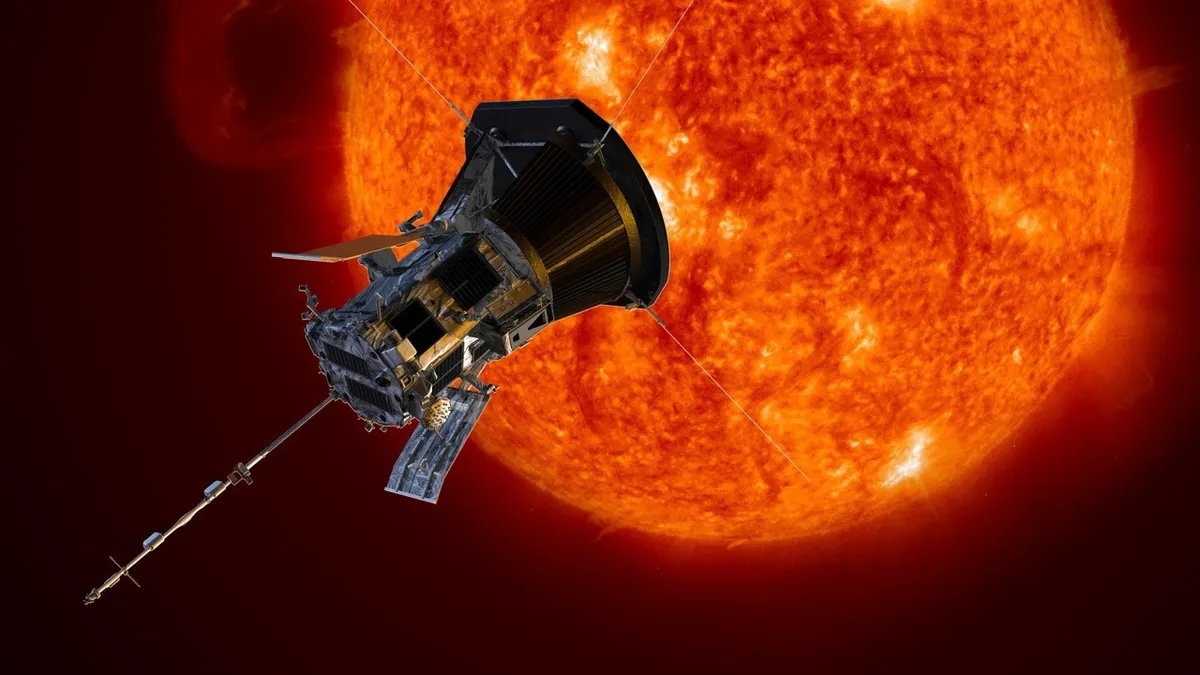
On Christmas Eve, NASA's Parker Solar Probe will swoop within 3.8 million miles (6.1 million kilometers) of the sun's surface at a whopping 430,000 mph (690,000 kph), breaking its own records for speed and closest approach to our star.
The spacecraft, roughly the size of a small car, completed its final swing past Venus last month, setting it on a path to come closer to the sun than any human-made object ever has before.
On Dec. 24, the Parker Solar Probe is expected to cut through plumes of plasma that are still rooted to the sun and even fly through a patch of a solar eruption, akin to a surfer diving under a crashing wave. In October, the sun reached its most turbulent phase in its 11-year cycle, meaning the spacecraft will soon get to study powerful solar flares occurring on top of each other, providing scientists with up-close data about the chaotic workings of our star.
"We are preparing to make history," Nour Rawafi, who is the project scientist for the mission, told reporters at the Annual Meeting of the American Geophysical Union (AGU) on Tuesday (Dec. 10). "Parker Solar Probe is opening our eyes to a new reality about our star," he said, adding the data sent home by the probe "is going to take us decades to sort through."
The probe's Christmas Eve feat is expected to occur at 6:40 a.m. EDT (1140 GMT), but mission control will be out of contact with the spacecraft at this time. Shortly before and after the closest approach — on Dec. 21 and Dec. 27 — scientists will look for a beacon tone from the probe that will confirm its health. If all goes to plan, the first images following the encounter may come as soon as the New Year kicks in, with science data following in the weeks after, said Rawafi.
Since its launch in 2018, the probe has helped decode longstanding mysteriesabout our star, chief among them being how its tenuous outer atmosphere, the corona, gets hundreds of times hotter the farther it stretches from the sun's surface. In 2022, a chance alignment of the probe with Europe's Solar Orbiterspacecraft provided scientists the rare opportunity to study the same patch of solar wind, revealing how energy-packed plasma waves accelerate the solar windto its unexpectedly high speeds.
Among its other discoveries, the Parker Solar Probe has also provided the first compelling evidence for the long-theorized but elusive dust-free zone around the sun, which is created by sunlight heating cosmic dust to high temperatures and turning it into gas.
A key reason for the spacecraft's good health for six long years and counting is the mission team's remarkable engineering, including a custom heat shield and an autonomous system that protects the probe from the sun's wrath even while pointing it toward our star to allow the coronal material to touch the spacecraft.
During its upcoming closest approach to the sun, the front of the heat shield is expected to reach a sizzling 1,800 degrees Fahrenheit (982 degrees Celsius). That's pretty hot, but the mission team is confident the spacecraft and its instruments can handle temperatures up to 2,500 degrees F (1,371 degrees C).
"It's really great to see all the science that is enabled by the fact that we overprepared," said Elizabeth Congdon, who is the lead engineer for the probe's thermal protection system. A specially designed white coating will reflect much of it back into space such that the spacecraft itself will witness relatively comfortable room temperatures, she added.
Quelle: SC
----
Update: 21.12.2024
.
This is how close NASA's Parker Solar Probe will fly by the sun
The probe is expected to pass within 3.86 million miles of the sun on Dec. 24.
The Parker Solar Probe will soon be the closest any human-made object has ever gotten to the sun.
The probe, engineered to study the corona -- the outermost layer of the sun's atmosphere, launched in August 2018 and has been gradually orbiting closer to the sun's surface ever since, Nicki Rayl, NASA deputy director of heliophysics, told ABC News.
"It'll be inside the upper atmosphere of the sun, literally touching the star," Rayl said.
In November, the probe conducted its seventh and final flyby of Venus, where it used the planet's gravity to alter its speed and direction so it could enter its final orbit around the sun.
"These cosmic catapults, where we pinball off of the various planets, allow a spacecraft to change its orbit without wasting a lot of fuel," Patricia Reiff, a professor of physics and astronomy at Rice University in Houston, told ABC News. "If you want to get closer and closer to the sun, you have to slow yourself down, and that takes fuel. They don't have a lot of onboard fuel."
Tools aboard the probe will collect data on the energy flowing out from the star, Rayl said. Research like this is integral because so much of life on Earth is dependent on the sun, she added.
By getting close to the sun, Reiff said, scientists will be able to measure the inner part of the solar wind, "which is where the solar corona expands out and becomes the solar wind, and it will travel inside that boundary where it's now mostly corona and not solar wind."
"And by understanding that process, where the corona becomes supersonic and turns into the solar wind, then we can help predict space weather and understand the sun and its processes better," she continued.
Solar activity can have negative impacts on satellites orbiting in space, as well as navigation and control for astronauts navigating through space, Rayl said.
"Getting a better understanding of what's happening in our local neighborhood really helps us protect our investments in space and the future of astronaut space travel," she said.

This is how close the Parker Solar Probe will get to the sun
The Parker Solar Probe is expected to pass within an "unprecedented" 3.86 million miles of the solar surface on Dec. 24, according to NASA.
"It's about to be on its closest approach to the sun," Rayl said.
There, the probe will cut through plumes of plasma connected to the sun and will even be close enough to pass through a solar eruption -- "like a surfer diving under a crashing ocean wave," the space agency said.
The probe has moved closer to the sun throughout its mission. In October 2018, just months after its launch, it broke the record of being the closest a human-made object has ever gotten to the sun, at 26.55 million miles -- a record previously set in 1976 by the Helios 2 spacecraft, which got within 27 million miles of the sun.

How fast is the Parker Solar Probe traveling?
The Parker Solar Probe is traveling at 430,000 mph, making it the "fastest human-made object in history," Rayl said.
The importance of the Parker Solar Probe's heat shield
The probe has been heralded by NASA as an engineering marvel. Its heat shieldhas been designed to withstand temperatures of about 2,500 degrees Fahrenheit while facing the sun at its closest approach, according to NASA.
At the same time, the heat shield will insulate the important scientific measurement equipment located toward the back of the probe, keeping that area at room temperature, Rayl said. The probe won't burn up due to the protective heat shield.
"This heat shield not only needs to protect the spacecraft from the sun but also needs to insulate all those precious science instruments that are getting us that incredible data on solar wind and the energy flowing out from the sun toward Earth," Rayl said.
The heat shield also allowed researchers to learn more about Venus during the numerous flybys. In July 2020, its camera -- the Wide-Field Imager for Parker Solar Probe, or WISPR -- captured images of Venus' scorching-hot surface through the thick cloud cover.
The WISPR cameras were able to see through the clouds to the surface of Venus, which glows in the near-infrared because it's so hot, Noam Izenberg, a space scientist at the Johns Hopkins Applied Physics Laboratory in Laurel, Maryland, said in a statement last month.
Reiff said the recent flyby of Venus not only helped change the Parker Solar Probe's orbit so it could get close to the sun, but it also helped scientists learn more about Venus, including data that can help distinguish physical or chemical properties of the planet's surface.
After the latest flyby of Venus, this will be the final orbital configuration for Parker. Once the probe runs out of fuel, it will no longer be able to fight against pressure from the sun, which will cause it to flip around and be incinerated.
Quelle: abc News
----
Update: 23.12.2024
.
All systems 'go' as Parker Solar Probe approaches closest encounter with Sun
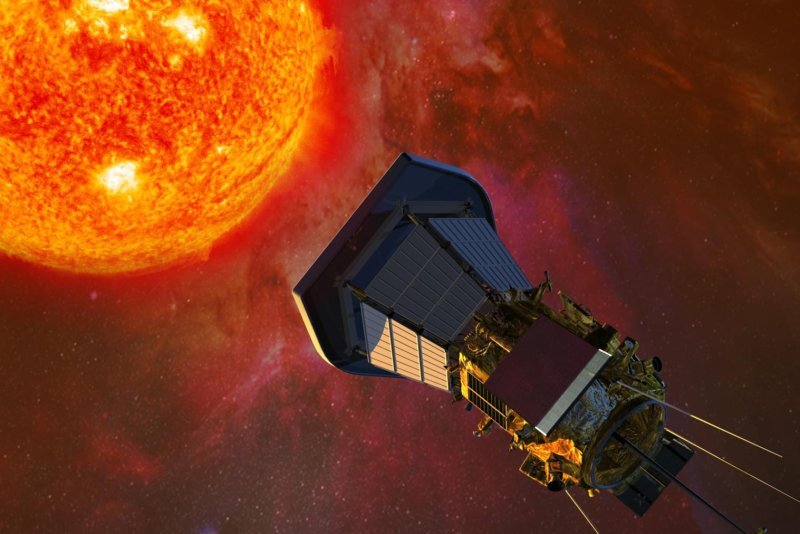
NASA's Parker Solar Probe is operating normally and remains on schedule for a record-setting close encounter with the Sun on Christmas Eve, mission controllers say.
All spacecraft systems on the probe are operating normally as it nears its closest point to the Sun at 3.8 million miles above the fiery solar surface, the Johns Hopkins Applied Physics Laboratory said in an update issued Friday.
"No human-made object has ever passed this close to a star, so Parker will truly be returning data from uncharted territory," said Nick Pinkine, Parker Solar Probe mission operations manager at APL. "We're excited to hear back from the spacecraft when it swings back around the Sun."
APL, based in Laurel, Md., said it received a transmission from the probe at 7:20 p.m. EST on Friday via NASA's Deep Space Network complex in Canberra, Australia. It indicated all systems are "go" for the Christmas Eve fly-by.
NASA officials hailed the news as a potential boon to space science. In making humanity's closest-ever approach to a star, it will serve as the culmination of what NASA calls "a nearly 70-year quest to unravel the Sun's secrets."
"This is one example of NASA's bold missions, doing something that no one else has ever done before to answer longstanding questions about our universe," said Arik Posner, Parker Solar Probe program scientist at the agency's headquarters in Washington.
"We can't wait to receive that first status update from the spacecraft and start receiving the science data in the coming weeks," he added.
The spacecraft was launched in 2018, decades after it was first conceived. It took three years to arrive at the Sun and has traveled closer to the G-type main-sequence star than any of its predecessors.
In 2021, it flew through the Sun's upper atmosphere, the corona, and took some particle samples. The agency called it a "monumental" moment and a "giant leap for solar science."
On Nov. 6, the Parker Solar Probe completed its seventh and final Venus gravity-assist maneuver, passing within 240 miles of Venus' surface. That flyby adjusted its trajectory into the final orbital configuration of its primary mission of the upcoming close solar encounter.
Quelle: UPI
----
Update: 24.12.2024
.
This Christmas Eve, humans will try to embrace a star

